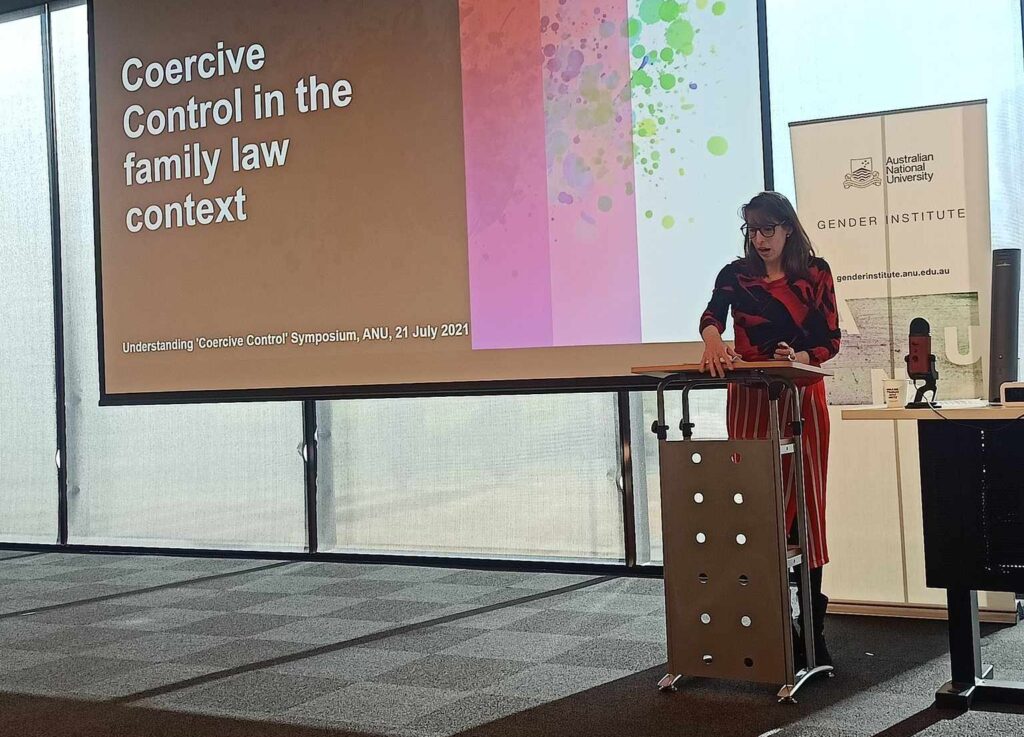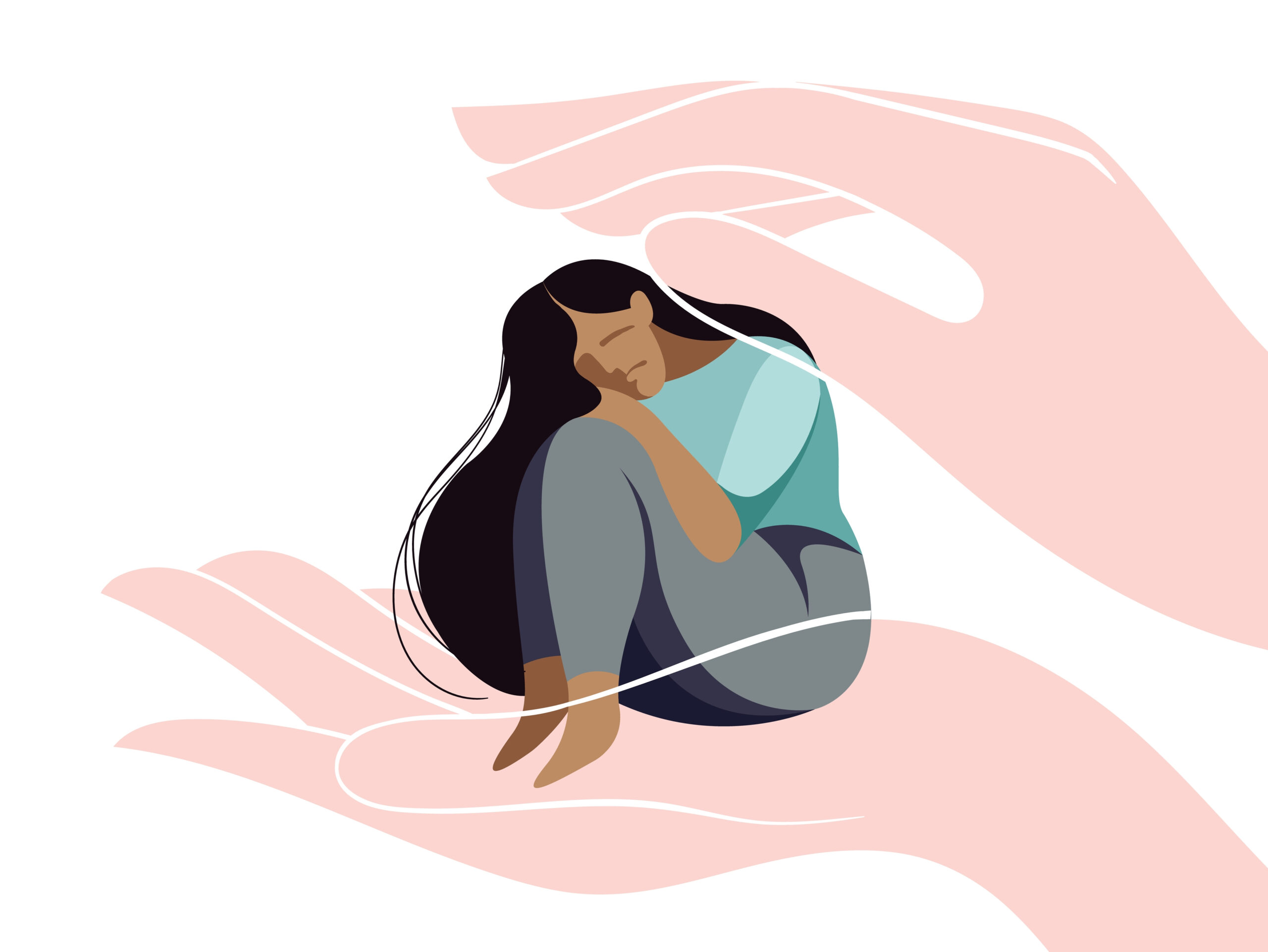The following article is a condensed version of a research paper delivered at the ANU Gender Institute symposium on ‘Understanding Coercive Control’ that explored coercive control from multiple inter-disciplinary perspectives.
I deal with issues of coercive control almost daily. In my role as a family lawyer I’ve “seen a lot”: needless to say, I was heartened by the recent legislative changes criminalising coercive control in NSW (see: Crimes Legislation Amendment (Coercive Control) Act 2022 (NSW)). While new amendments to the Crimes Act 1900 (NSW) have created an offence of coercive control, the family law system has been dealing with (or trying to deal with) coercive control for some time.
There is no overarching definition of “coercive control” in the Australian jurisdiction. The Federal Circuit and Family Court of Australia (FCFCA), in their Best Practice Guidelines, define coercive control as: “an ongoing pattern of use of threat, force, emotional abuse and other coercive means to unilaterally dominate a person and induce fear, submission and compliance in them”.
Professor Evan Stark, American sociologist and forensic social worker, developed the concept of “coercive control.” He suggests it is “a pattern of domination that includes tactics to isolate, degrade, exploit and control” on the part of the perpetrator; it is a “liberty crime” rather than a “crime of assault”.
The Australian family court system recognises coercive control as a serious form of domestic violence. This is reflected in the case law as well as in the legislation (that is, the Family Law Act 1975 (Cth) (Family law Act)). In the matter of Morton & Beatty[2022] the Court commented that: “Coercive control, as a nebulous sub-species of conduct within the meaning of family violence, is plainly anticipated by the words of s 4AB(1).” Section “4AB(1)” of the Family Law Act defines “family violence”.
It also sets out examples of behaviour that may constitute coercive controlling behaviour such as “repeated derogatory taunts” to “unreasonably withholding financial support” to preventing a person from “making or keeping connections with…family, friends or culture.” Whilst the Family Law Act sets out some guidance as to what constitutes coercive control, it does not strictly define or limit what it may entail.
As such, what will be determined as coercive and controlling behaviour will turn on the evidence before the Court and the context in which events take place (see, e.g. Carter & Wilson [2023] FEdCFamC1A 9). Alas, herein lies a significant problem which may impact prosecuting, and indeed identifying, coercive control: that is, the evidence (or lack of evidence).
While the Court has long accepted “where domestic violence occurs in a family it frequently occurs in circumstances where there are no witnesses other than the parties to the marriage, and possibly their children…” and as such, does not necessarily require “corroborative evidence from a third party or a document or an admission” (see, e.g. Amador & Amador (2009) 43 Fam LR 268), it nevertheless can be difficult for victims, in an adversarial court system, to prosecute their case in circumstances where there is no corroborating evidence and the evidence is in affidavit form only, consisting of “he said – she said” allegations, and where perpetrators may flatly deny any allegations of family violence.
In my time as a family lawyer, I have seen several cases where victims of coercive control have been left helpless and re-traumatised. Coercive control can be “missed” or underplayed by actors working in the Court system (including the judges, lawyers, psychologists, police and others).
This “misidentifying” of coercive control can occur for several reasons; including, but not limited to:
- there may be fear of the perpetrator, or legal institutions themselves, which may, in turn, lead to a lack of engagement by the victim or a partial engagement where a client may not be forthcoming with their instructions, possibly fearful of potential ramifications;
- cultural (mis)understandings of the legal system (including language barriers). It is known that women from culturally and linguistically diverse backgrounds are less likely to report domestic violence;
- a lack of support and/or isolation: the victim may be disinclined to tell his or her story in circumstances where he or she does not have family (or other) support with “nowhere to go”;
- poor legal representation or no legal representation: a self-represented litigant may not fully understand the nuances of presenting evidence to the Court, and indeed, poor legal representation, where a legal practitioner is not attuned to the nuances of domestic violence, may have a similar effect – this risks a victim not setting out his or her version of events and evidence adequately prosecuting his or her case;
- mental health: victims may be suffering from mental health issues, including situational pressures which impact on their ability to engage with the legal system and supports.
The legal system is not perfect. Although the FCFCA, to their credit, have developed protocols around early identification of domestic violence and specialised case management; aimed at mitigating the risk of harm to parents and children; and minimising systems abuse. Recent legislative changes removing the cross examination of victims by alleged perpetrators has also come into force (see section 102NA, Family Law Act). But, is more needed?
Cases involving coercive control require the legal actors – the lawyers, the family consultants, the judges – to be seriously attuned, and literate, to the nuances of this type of domestic and family violence.

Alexandra presents her paper at the ANU Gender Institute symposium on ‘Understanding Coercive Control’. Picture: Supplied
Legal academic, Professor Heather Douglas has suggested the possibility that “increased funding and training of police, lawyers and judges will afford better outcomes than law reform.” If coercive control cannot be identified and thoughtfully managed by “legal actors”, in a timely way, this, as we have seen can have dire consequences for victims and their families (see, e.g. the Edwards and Clarke coronial inquests).
Repeated (and regularly updated) training is needed in this sphere; training where practitioners meaningfully engage with the concepts of domestic and family violence in order to give them the best tools possible to identify coercive and controlling behaviours, support victims, and in turn run their legal case appropriately.
Coercive control has been shown to be a prevalent precursor to serious and often deadly incidents of family and domestic violence. It is right that a spotlight be shown upon this insidious form of domestic violence. The recent criminalisation of coercive control in NSW will, if nothing else, surely bring awareness to this issue. What sort of practical impact it will have, we will have to wait and see.
- Please note: image at top is a stock illustration
Alexandra McCosker is a practising lawyer and mediator working in the areas of family law and care and protection. She is also a PhD candidate in the School of History at the Australian National University.





